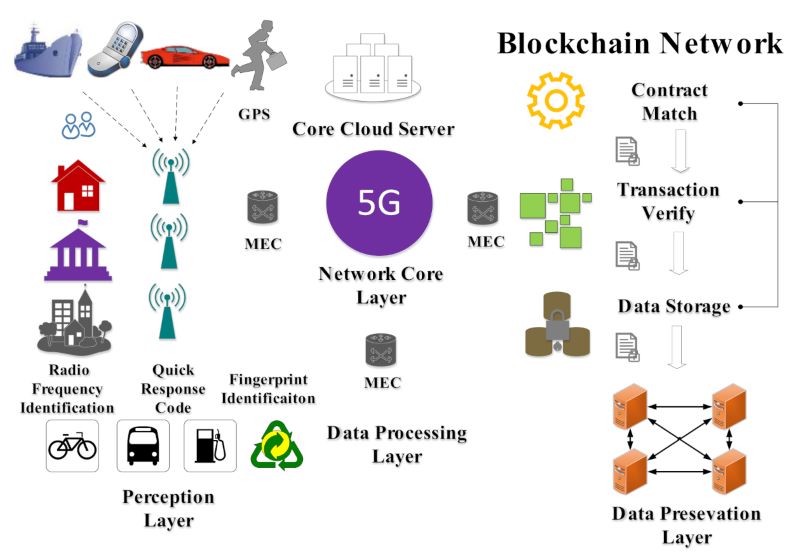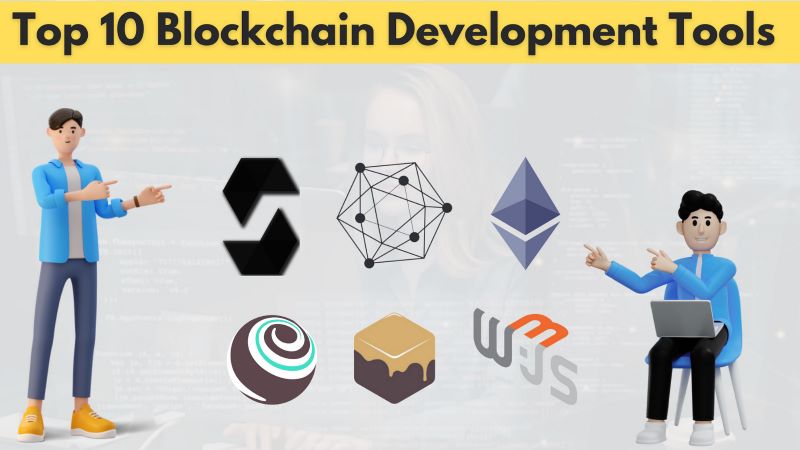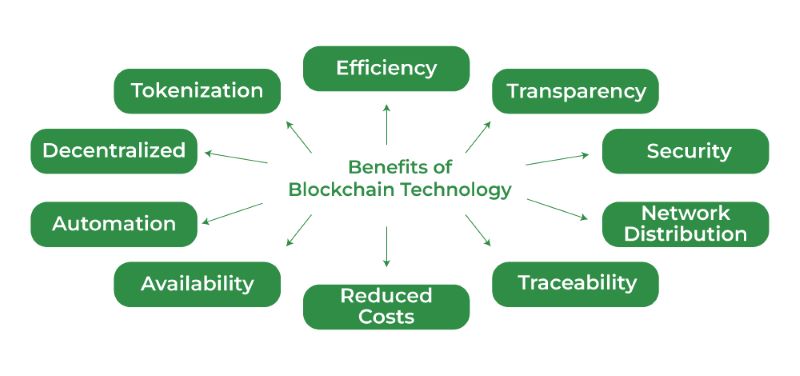Categories: Blockchain
Blockchain Development Networks: The Backbone of Decentralized Innovation
"Blockchain Development Networks" provide the essential frameworks and tools for building decentralized applications. These networks support developers with scalable, secure, and efficient solutions, driving innovation and advancing the adoption of blockchain technology across diverse industries.
Blockchain development networks are the backbone of the decentralized ecosystem, providing the essential tools, resources, and infrastructure necessary for building dApps. They serve as the foundation upon which developers can create innovative solutions that leverage the unique advantages of blockchain technology, such as transparency, security, and immutability. For developers, these networks are not just a convenience but a necessity, offering a streamlined path to building and scaling decentralized applications.
Table of Contents
In this exploration of blockchain development networks, we will delve into their core functions, the benefits they offer developers, and the key players in this rapidly evolving landscape. Whether you're a seasoned blockchain developer or a curious newcomer, understanding the role of blockchain development networks is crucial for navigating the exciting world of decentralized innovation.
The Role of Blockchain Development Networks
Blockchain development networks play a pivotal role in shaping the decentralized landscape, offering a robust foundation upon which developers can build and deploy innovative dApps. These networks provide the essential infrastructure and tools that empower developers to harness the full potential of blockchain technology.
Core Functions
Secure and Decentralized Environment: Blockchain development networks serve as secure and decentralized platforms for developing dApps, ensuring data integrity and protection from unauthorized access. This decentralized setup enhances dApps' resilience against attacks and system failures. For instance, U2U Network offers robust security through its innovative Helios consensus mechanism, ensuring fast transaction finality and enhanced security measures.
Comprehensive Toolset: These networks provide a wide array of tools and resources tailored for smart contract creation, testing, and deployment. Integrated development environments (IDEs), smart contract libraries, testing frameworks, and debugging tools streamline the development process, accelerating time-to-market for dApps. U2U Network's intuitive interface and extensive toolset simplify development tasks, catering to both seasoned developers and newcomers.

Seamless Interaction: Blockchain development networks enable seamless interaction between dApps and the underlying blockchain infrastructure. They offer APIs and Software Development Kits (SDKs) that facilitate transaction execution, data retrieval, and blockchain interaction. This capability ensures that developers can efficiently integrate their applications with the blockchain ecosystem.
Scalability and Interoperability: Addressing scalability challenges, these networks enhance transaction throughput and reduce congestion, thereby improving overall performance. They also promote interoperability by facilitating communication and asset exchange across different blockchain networks. U2U Network's Universal Messages Verification (UMV) technology exemplifies efforts to achieve seamless interoperability between diverse blockchains, expanding the scope of potential dApp use cases.
Benefits for Developers
Simplified Development Process: Pre-built tools and libraries provided by blockchain development networks significantly simplify the development process, allowing developers to focus on building innovative features rather than reinventing the wheel.
Thriving Community: These networks foster vibrant communities of developers, offering a wealth of knowledge, support, and collaboration opportunities. Developers can access forums, tutorials, documentation, and other resources to accelerate their learning and development journey.
Reduced Costs and Time-to-Market: By leveraging the tools and resources provided by blockchain development networks, developers can significantly reduce the costs and time associated with building and deploying dApps. This enables faster innovation and allows projects to reach the market more quickly.
Enhanced Security and Reliability: The decentralized nature of blockchain development networks ensures that dApps are inherently more secure and reliable than traditional centralized applications. This is because there is no single point of failure that can be exploited by attackers.
Key Blockchain Development Networks
The blockchain development landscape is constantly evolving, with new networks emerging to address the growing demand for decentralized applications. Here's a look at some of the key players:
Ethereum: Widely recognized as the birthplace of decentralized applications (dApps), Ethereum remains a leader in blockchain development. Its robust smart contract capabilities, powered by the Solidity programming language, have enabled a wide array of applications including decentralized exchanges (DEXs), gaming platforms, and non-fungible token (NFT) marketplaces. Ethereum's extensive developer community ensures continuous innovation and support for new projects.
Polkadot: Built with interoperability at its core, Polkadot connects specialized blockchains (parachains) into a unified ecosystem. This facilitates seamless communication and data sharing between different chains, opening up new possibilities for cross-chain applications and services.
Cosmos: Similar to Polkadot, Cosmos focuses on interoperability but allows developers to create independent blockchains (zones) that can interact through the Inter-Blockchain Communication (IBC) protocol. This modular approach offers flexibility and customization, making it suitable for diverse blockchain development needs.

Hyperledger Fabric: Tailored for enterprise applications, Hyperledger Fabric is a permissioned blockchain platform emphasizing privacy and scalability. Organizations can create private blockchain networks with customizable governance structures and access controls. Its modular architecture supports applications in supply chain management, trade finance, and other enterprise sectors.
Other Notable Networks: The blockchain landscape continues to expand with emerging platforms like:
- Solana: Known for high-speed transaction processing and low fees, making it ideal for scalable dApps.
- Avalanche: A highly scalable platform using novel consensus mechanisms for fast transaction finality and high throughput.
- Corda: An open-source blockchain platform designed for financial services, offering features such as privacy, security, and interoperability.
Essential Tools and Resources for Blockchain Developers
Building successful decentralized applications (dApps) hinges on leveraging a robust toolkit and accessing comprehensive resources. Essential for blockchain developers are:
Integrated Development Environments (IDEs)
Remix: Browser-based IDE simplifying smart contract development, testing, and deployment with beginner-friendly features and extensive documentation.
Truffle: Leading Ethereum development framework, facilitating smart contract management, testing, and deployment scripts.
Hardhat: Tailored for Ethereum developers, offering flexibility and extensibility in building intricate smart contracts.
Smart Contract Languages
Solidity: Ethereum's primary language, akin to JavaScript, favored for its ease of learning and extensive use in dApp creation.
Vyper: Emphasizing security and readability, suitable for critical applications needing rigorous auditability.
Rust: Increasingly popular for its safety and performance benefits, adopted by projects like Solana and Polkadot.
Testing Frameworks
Ganache: Personal Ethereum blockchain for local development and testing, enabling simulation of blockchain interactions.
Waffle: Seamlessly integrates with Hardhat and Truffle, streamlining smart contract testing processes for Ethereum.
Brownie: Python-based framework known for user-friendly features and robust testing capabilities on the Ethereum network.

Security Tools
MythX: Conducts Ethereum smart contract security assessments through static and dynamic analysis, identifying vulnerabilities.
Slither: Static analysis framework for Solidity, adept at detecting diverse smart contract vulnerabilities like reentrancy attacks.
Manticore: Symbolic execution tool for Ethereum, automating bug and vulnerability discovery by exploring multiple execution paths.
Community Resources
Developer Forums: Vital platforms like Ethereum Stack Exchange provide collaborative support, troubleshooting, and networking.
Online Courses and Tutorials: Abundant resources offering affordable or free learning opportunities for blockchain development.
Documentation: Official guides from blockchain platforms and tools, indispensable for mastering their functionalities effectively.
The Future of Blockchain Development Networks
The future of blockchain development networks holds immense promise, driven by emerging trends, persistent challenges, and a landscape ripe with untapped opportunities.
Trends
Layer 2 Scaling Solutions: With blockchain adoption surging, scalability limitations on layer 1 blockchains are increasingly evident. Layer 2 solutions like rollups and sidechains are emerging to alleviate these constraints by processing transactions off-chain, enhancing throughput and reducing fees. U2U Network's exploration of layer 2 solutions promises to significantly boost scalability and efficiency within its ecosystem.
Cross-chain Interoperability: The fragmented blockchain ecosystem impedes seamless asset and data transfers across networks. Cross-chain interoperability protocols such as Cosmos IBC and Polkadot's bridges aim to resolve this, enabling communication and collaboration among diverse blockchains. U2U Network's Universal Messages Verification (UMV) stands out as a pioneering solution poised to revolutionize cross-chain interoperability, fostering greater connectivity and synergy across the blockchain landscape.
Decentralized Finance (DeFi): DeFi applications, leveraging platforms like Ethereum, are reshaping finance by offering decentralized services such as lending, borrowing, and trading without intermediaries. The future will likely witness continued DeFi innovation, with new platforms emerging to meet rising demand for decentralized financial solutions.
Non-Fungible Tokens (NFTs): NFTs have surged in popularity, revolutionizing digital ownership and asset monetization. Blockchain networks play a pivotal role in facilitating the creation, trading, and management of NFTs, with ongoing growth expected across diverse industries.

Challenges
Scalability Limitations: Scaling blockchain networks remains a critical challenge due to high transaction fees and slow confirmation times. While layer 2 solutions and innovative consensus mechanisms like Proof of Stake offer potential solutions, ongoing research and development are essential to achieve scalable blockchain infrastructure.
High Transaction Fees: Elevated transaction costs, particularly on networks like Ethereum during peak periods, pose barriers to entry for users and applications. Solutions such as layer 2 scaling and efficient consensus mechanisms are actively pursued to mitigate these issues.
Regulatory Uncertainty: Evolving regulatory landscapes for blockchain and cryptocurrencies create uncertainty, inhibiting business and developer initiatives. Clear regulatory frameworks are crucial to fostering innovation and promoting widespread blockchain adoption through collaboration between stakeholders and regulators.
Opportunities
Despite challenges, blockchain development networks present vast opportunities for innovation across industries. As technology matures and adoption expands, expect a surge in novel applications transforming sectors like supply chain management, healthcare, and voting systems. The limitless potential of blockchain promises a future defined by decentralization, security, and transparency.
U2U Network's Role: Positioned at the forefront with a commitment to innovation, U2U Network focuses on scalability, interoperability, and privacy. It is poised to lead the evolution of blockchain development networks, shaping a decentralized, secure, and transparent future alongside other forward-thinking projects.
In conclusion, blockchain development networks are not just a technological trend, but a fundamental pillar in the ongoing evolution of decentralized applications. They provide the essential infrastructure, tools, and resources that empower developers to build innovative solutions that leverage the unique advantages of blockchain technology. While challenges like scalability and regulatory uncertainty remain, the future of blockchain development networks is bright, with emerging trends like layer 2 scaling solutions, cross-chain interoperability, DeFi, and NFTs paving the way for a new era of decentralized innovation. As the blockchain ecosystem continues to mature, blockchain development networks will play an increasingly critical role in shaping the future of technology and driving the adoption of decentralized applications across various industries.
.png)